This is the miraculous staircase of Saint Joseph at Loretto Chapel in Santa Fé, New Mexico. U.S.A., which, after 134 years since it was built in 1878, still confounds architects, engineers, and master craftsmen in the physics of its construction and remains inexplicable in view of its baffling design considerations. The unusual helix shaped spiral staircase has two complete 360° turns, stands 20 feet high up to the choir loft and has no newel (center pole) to support it as most circular stairways have. Its entire weight rests solely on its base and against the choir loft – a mystery that defies all laws of gravity, it should have crashed to the floor the moment anyone stepped on it, and yet it is still in use daily for over a hundred years.
The risers of the 33 steps are all of the same height. Made of an apparently extinct wood species, it was constructed with only square wooden pegs without glue or nails. At the time it was built, the stairway had no banisters. These were added 10 years later in 1888 by Phillip A. Hesch at the Sisters’ request.
There are four mysteries that surround the spiral staircase in the Loretto Chapel:
- the identity of its builder;
- the physics of its construction which defies all laws of gravity;
- origin of the type of wood used which does not exist in the entire region or anywhere near it;
- and the staircase which has 33 steps, the age of Jesus Christ.
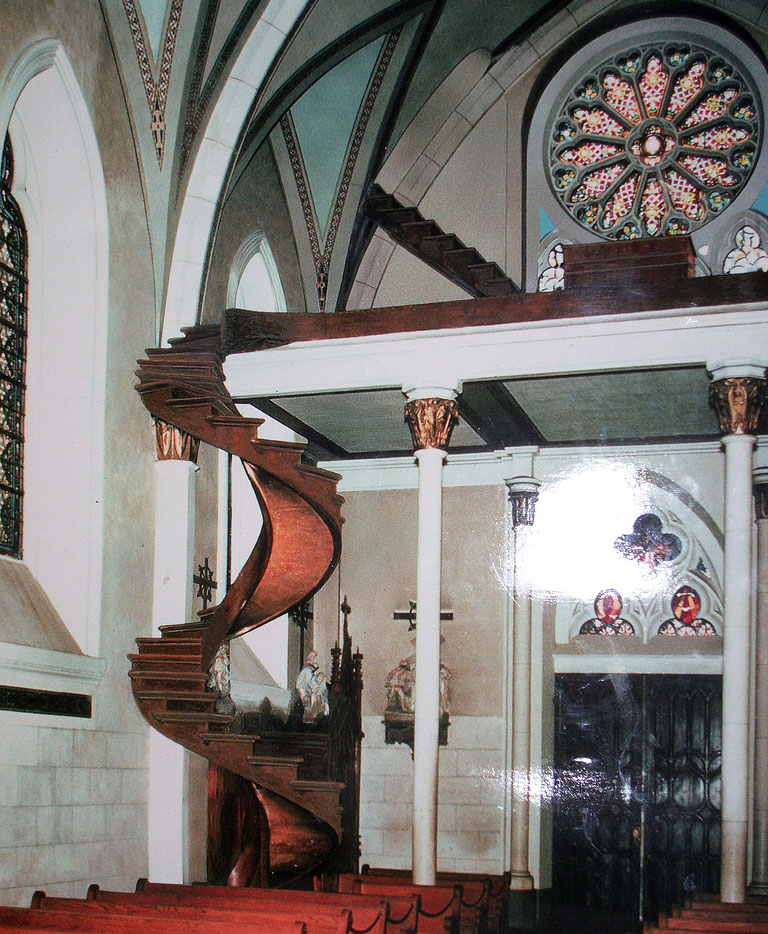
How the Staircase looked between 1877-1887 before the banisters were added
Over the years, many have flocked to the Loretto Chapel to see the Miraculous Staircase. The case had been investigated and studied. The staircase has been the subject of many articles, and re-enacted in TV specials, and movies including “Unsolved Mysteries” and the 1998 television movie entitled “The Staircase”, starring Barbara Hershey and William Petersen.
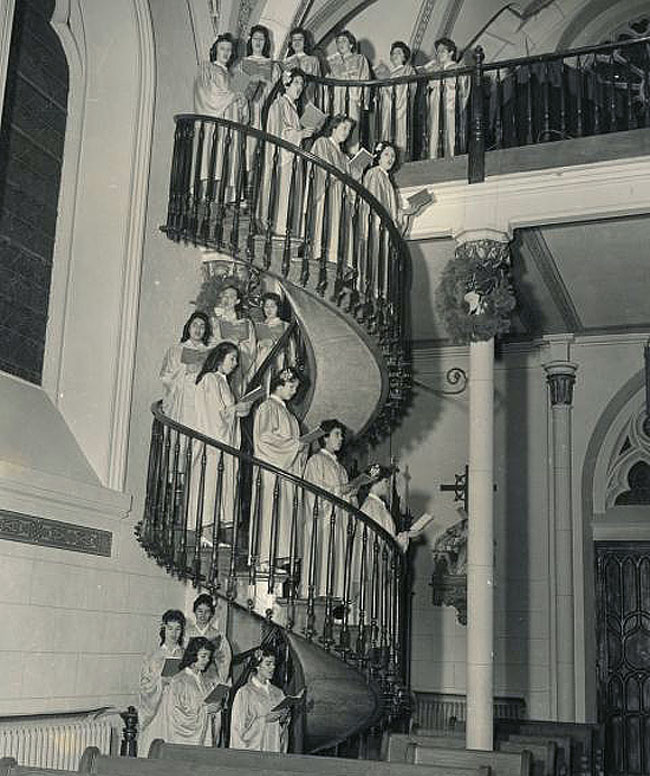
According to the accounts of Mother Magdalen, Mother Superior of the Sisters of Loretto, when the Chapel was completed in 1878, there was no way to access the choir loft twenty-two feet above. Local carpenters were summoned to address the problem, but all concluded that access to the loft would have to be via ladder as a staircase would interfere with the interior space of the small Chapel.
The Sisters of Loretto made a novena to Saint Joseph, the Patron Saint of Carpenters, and on the ninth and final day of prayer, a gray-haired man came to the convent on a donkey with a toolbox and approached Mother Magdalen. He asked if he might try to help the Sisters by building a stairway but he needed total privacy. Mother gave her consent gladly, and he set to work and locked himself in the chapel for three months. The only tools he had were a saw, a hammer, a T-square, and a few tubs of water for soaking the wood to make it pliable.

When the staircase was completed, the carpenter disappeared without pay or thanks. The Loretto Sisters ran an advertisement in a local newspaper in search for the man but found no trace of him. They offered a reward for the identity of the man, but it was never claimed. But Mother Magdalen and her community of Sisters and students knew that the stairway was Saint Joseph’s answer to their fervent prayers. Many were convinced that the humble carpenter was none other than Saint Joseph himself.
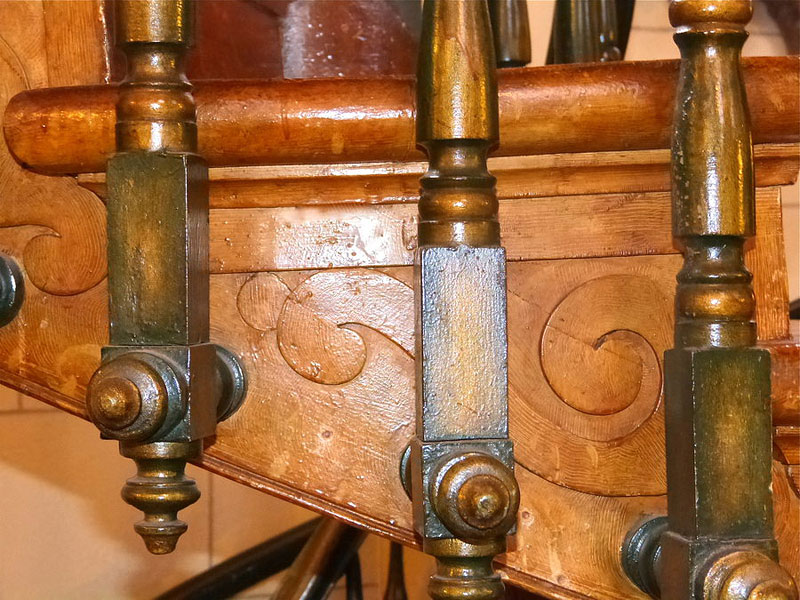
One of the most baffling things about the Loretto Chapel stairway, however, is the perfection of the curves of the stringers. The wood is spliced along the sides of the stringers with nine splices on the outside and seven on the inside, each fitted with the greatest precision. Each piece is perfectly curved. How this was done in the 1870’s by a single man with only the most primitive tools is inexplicable to modern architects. Many experts have tried to identify the wood and surmise where it came from, but no one has ever been able to give a satisfactory answer to this mystery. The treads were constantly walked on for over a hundred years since the stairway was built, but showed signs of wear only on the edges. The wood was identified as an “edge-grained fir of some sort”, but others say it is a long-leaf yellow pine, but the hard-wearing wood definitely did not come from New Mexico. Where the mysterious carpenter got this wood remains a mystery up to this day.

Some claim (for example in Wikipedia) the riddle of the carpenter’s identity was finally solved in the late 1990s by Mary Jean Straw Cook, author of Loretto: The Sisters and Their Santa Fe Chapel (2002: Museum of New Mexico Press). She claimed his name was Francois-Jean “Frenchy” Rochas, an expert woodworker who emigrated from France and arrived in Santa Fe around the time the staircase was built. In addition to evidence that linked Rochas to another French contractor who worked on the chapel, Cook found an 1895 death notice in The New Mexican explicitly naming Rochas as the builder of “the handsome staircase in the Loretto chapel.” However, the skeptical viewpoint comes in large part from a magazine operated by humanists and atheists (and in fact called The Skeptical Inquirer).
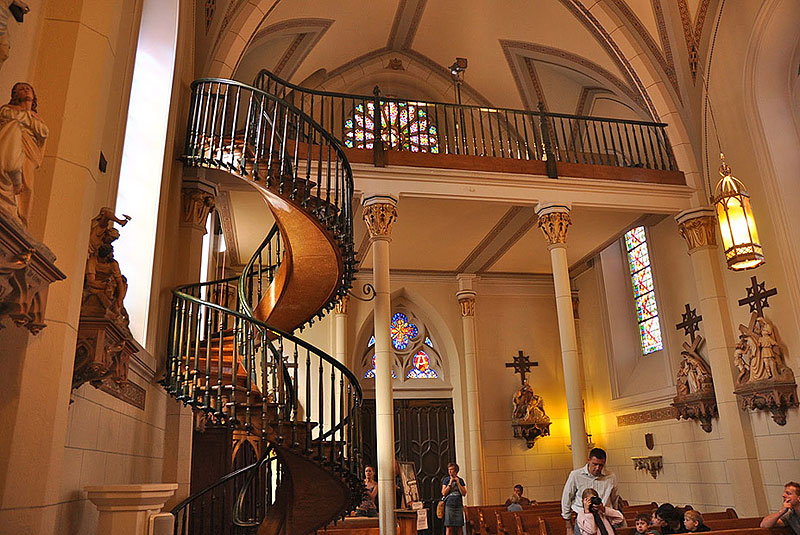
Ther is another twist to this mystery. It comes to us from Richard Lindsley, who managed the Loretto Chapel (which is now in private hands) from 1991 to 2006 and says at one point he took a sample of wood from the staircase and gave it to a scientist named Forrest N. Easley, who worked at the Naval Air Weapons Station at China Lake, California.
“I went to the top of the stairs,” Lindsley told Spirit Daily. “There’s a crack that’s held together with a metal plate. The staircase had sunk an inch or inch-and-a-half into the floor. That’s where I pried a loose piece and gave it to him. I expected to hear the results quickly.”
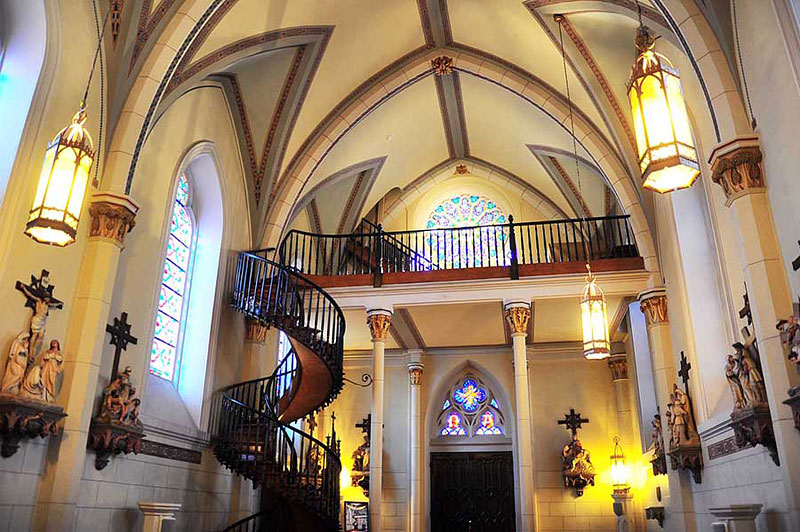
Instead, says Lindsley, two months passed and he all but gave up about hearing anything. But one day, he recalls, Easley showed up at the chapel because he wanted to report his results in person. What he told Lindsley was straight to the point: the wood sample was spruce of no known subspecies. It matched nothing in the scientific record. Easley had wanted to thoroughly search through all known data. That’s what had caused the delay. He researched it further and after 18 months came out with a careful, measured statement saying that the wood from the staircase had molecules that were “very dense and square” and indicated that it had come from trees that grew slowly in a “very, very cold place,” like Alaska (not New Mexico).
That was interesting because at the time the chapel was constructed — by the mysterious stranger — there was no rail system that could have brought in the wood from such a distance, and no local trees that grew above an elevation of 10,000 feet — which is the only place of comparable cold.
The closest match remained spruce from Alaska. In short, it was no known type.

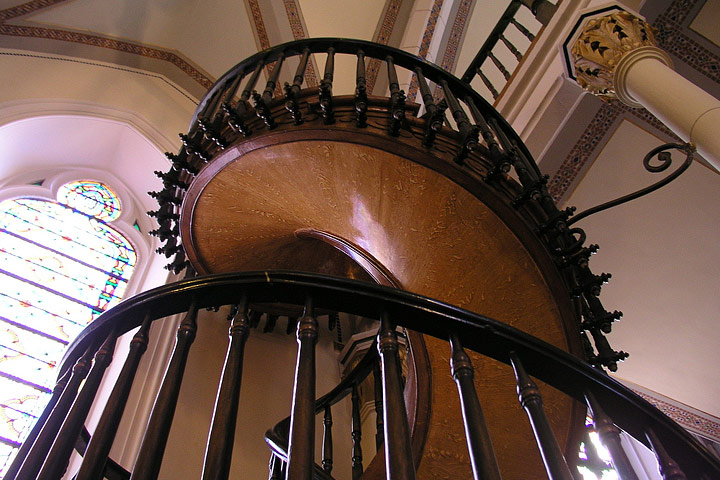



Leave a Reply